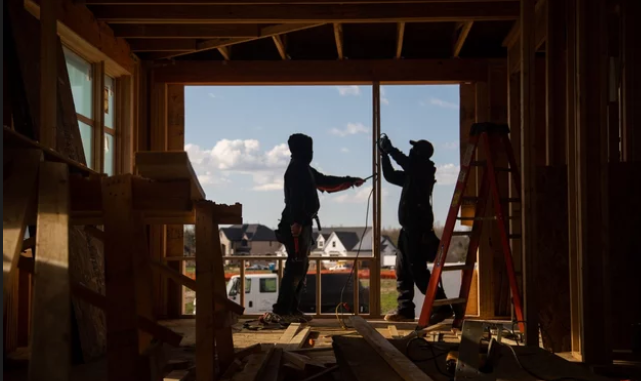
(Bloomberg) — U.S. consumer spending and incomes fell more than forecast in November and filings for unemployment benefits remained at elevated levels last week, the latest signs that the autumn’s surge in coronavirus cases is sapping the economic recovery.
Initial jobless claims in regular state programs dropped by 89,000 to 803,000 in the week ended Dec. 19, according to the Labor Department Wednesday, compared with the median projection of economists for 880,000. On an unadjusted basis, claims fell by about 73,000.
Follow reaction to the U.S. data in real time on Bloomberg’s TOPLive blog
A separate Commerce Department report showed consumer spending, which accounts for a majority of the economy, dropped 0.4% last month — the first decline since April. Personal income decreased 1.1%, reflecting the winding down of several pandemic aid programs.
The data show a U.S. economy limping into year end and suggest many Americans will struggle in coming months as coronavirus cases surge across the nation. More businesses also face closure or layoffs amid colder weather and less foot traffic.
Vaccine distribution offers hope on the horizon, and the fiscal stimulus package approved by Congress this week should offer some relief, though President Donald Trump’s remarks late Tuesday put the fate of the deal in question.
“The economy is still pretty soft,” said Scott Brown, chief economist at Raymond James Financial Inc. “The level of jobless claims suggests there’s still labor-market weakness,” while on spending, “you see the pandemic’s impact on the season: There’s less seasonal shopping than usual, there’s less seasonal travel.”
Other reports Wednesday showed new home sales unexpectedly tumbled to a five-month low, while consumer sentiment and a proxy for business investment trailed forecasts.
U.S. stocks edged higher as investors appeared ready to look past the president’s comments to the promise of pandemic relief that will come sooner or later. Yields on 10-year Treasuries rose, while the dollar fell.
Benefit Recipients
The Labor Department figures showed continuing claims, which roughly approximate the pool of total state benefit recipients, decreased by 170,000 to 5.34 million in the week ended Dec. 12. This figure doesn’t include the millions on federal pandemic aid programs, which are set to be extended under the new fiscal stimulus package.
Even with the drop in initial jobless claims, the level remains almost quadruple what it was before the pandemic, and the four-week average edged up to a two-month high. California and New York made up most of the drop on an unadjusted basis.
More than half of states reported a decline in initial claims, while Illinois, Virginia and Pennsylvania experienced an increase in claims last week.
The decline in spending, which exceeded estimates in Bloomberg’s survey of economists, followed a downwardly revised 0.3% increase in October. Spending on goods fell 1%, driven by clothing, footwear and new motor vehicles. Services outlays slipped on decreases for food services and accommodations.
“We are losing momentum at a critical time,” Diane Swonk, chief economist at Grant Thornton in Chicago, said on Bloomberg Television. “Consumer spending is pulling back or slowing down at a time when we should be ramping up, and that’s because of the surge in Covid cases.”
Also Wednesday, data showed orders for U.S. durable goods rose in November by more than forecast. But a proxy measure for business investment — non-defense capital goods orders excluding aircraft — increased by 0.4%, less than the 0.6% estimate, following an upwardly revised 1.6% advance in October.
The weekly jobless claims report is usually released on Thursday, but was moved up because the federal government will be closed Dec. 24.
*story by Bloomberg